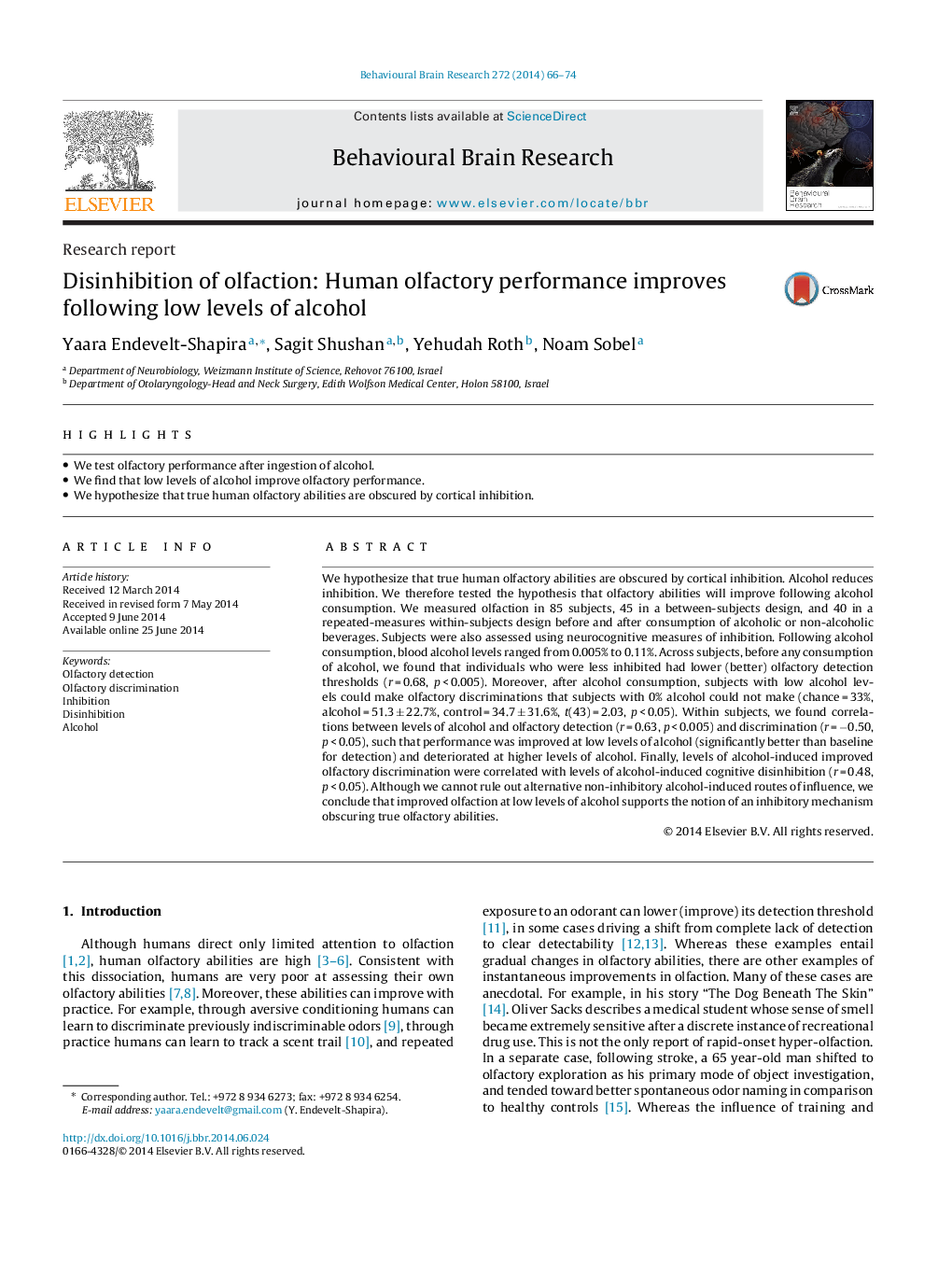| کد مقاله | کد نشریه | سال انتشار | مقاله انگلیسی | نسخه تمام متن |
|---|---|---|---|---|
| 6257474 | 1612960 | 2014 | 9 صفحه PDF | دانلود رایگان |
- We test olfactory performance after ingestion of alcohol.
- We find that low levels of alcohol improve olfactory performance.
- We hypothesize that true human olfactory abilities are obscured by cortical inhibition.
We hypothesize that true human olfactory abilities are obscured by cortical inhibition. Alcohol reduces inhibition. We therefore tested the hypothesis that olfactory abilities will improve following alcohol consumption. We measured olfaction in 85 subjects, 45 in a between-subjects design, and 40 in a repeated-measures within-subjects design before and after consumption of alcoholic or non-alcoholic beverages. Subjects were also assessed using neurocognitive measures of inhibition. Following alcohol consumption, blood alcohol levels ranged from 0.005% to 0.11%. Across subjects, before any consumption of alcohol, we found that individuals who were less inhibited had lower (better) olfactory detection thresholds (r = 0.68, p < 0.005). Moreover, after alcohol consumption, subjects with low alcohol levels could make olfactory discriminations that subjects with 0% alcohol could not make (chance = 33%, alcohol = 51.3 ± 22.7%, control = 34.7 ± 31.6%, t(43) = 2.03, p < 0.05). Within subjects, we found correlations between levels of alcohol and olfactory detection (r = 0.63, p < 0.005) and discrimination (r = â0.50, p < 0.05), such that performance was improved at low levels of alcohol (significantly better than baseline for detection) and deteriorated at higher levels of alcohol. Finally, levels of alcohol-induced improved olfactory discrimination were correlated with levels of alcohol-induced cognitive disinhibition (r = 0.48, p < 0.05). Although we cannot rule out alternative non-inhibitory alcohol-induced routes of influence, we conclude that improved olfaction at low levels of alcohol supports the notion of an inhibitory mechanism obscuring true olfactory abilities.
Journal: Behavioural Brain Research - Volume 272, 1 October 2014, Pages 66-74
